Social Media Marketing Strategy: A Comprehensive Guide for Success
Master social media marketing with our comprehensive guide. Unlock success and boost your brand's online presence. Get started today!
Social media is a requirement for modern businesses. With 75% of internet users using social media to research brands, forgoing or neglecting social media is detrimental to your bottom line. Whether it’s interacting with your audience on Twitter or giving your customers a behind-the-scenes look at your business on Instagram, your social media is a key interface with consumers, and represents an important part of the customer journey and experience. To leverage your social media accounts to the fullest, you need a good social media marketing strategy.
With so many platforms, forms of content, and a saturated market, it can be overwhelming to start or revise your social media strategy. But devoting time and energy to your brand’s social media marketing strategy can:
- Streamline your customer journey
- Increase brand awareness
- Build loyal customers
- Grow your audience
- Improve the customer experience
- Increase conversions
- And more!
Read on for the ultimate guide to building your brand’s social media strategy.
To build your social media marketing strategy, start by understanding your target audience
When it comes to social media, you don’t need to reinvent the wheel. But you do need to understand your target audience. By identifying your ideal customer profile, you can better shape your strategy and ensure its success.
Social media platforms are a key stepping stone in the customer journey. And impressions matter! 71% of consumers who have a positive experience with a brand online are likely to recommend that brand to their friends and family. To generate more visibility and more impressions, you first need to understand your audience and their preferences. Tailoring your social media presence to your followers will ensure success in the long run. Start by asking yourself: what do customers want when they come to you online? Are they trying to find more images of your products? Do they want advice on which products or services to get? Or do they want to laugh about your newest product?
Duolingo is an impeccable example of a brand that identified and capitalized on its audience’s interests. Known for their viral TikToks featuring a member of their team in a Duolingo owl costume, Duolingo turned the quotidian topic of language learning into a fun and engaging online community. Instead of the language learning tips you might expect from the app, Duolingo’s social team focused on the funny parts of the experience. After all, nobody was coming to Duolingo’s social media for more tips - the app provides plenty of those already. From wonky translations to viral dances and pop culture references, Duolingo capitalized on its audience to build a community of more than 6 million followers. Not too shabby for a language-learning app! Rosetta Stone could never.

Here, Duolingo is joking about a common occurrence among its users: groaning when they get a notification to do their daily lesson. In this way, Duolingo makes itself more relatable. Although Duolingo undoubtedly wants you to keep using the app, they’re self-aware about how hard it is to stay motivated. Here’s another great example:

Of course, getting a mascot costume and complaining about Spanish lessons isn’t a one-size-fits-all plan. Keep reading to understand how to understand your target audience!
Pro tip: think about what your customers are coming to your page for, and create content around that. Do they want tips, advice, or to see your products in action? Or, do they want to complain or get a bit of humor? Understand your audience to shape your content strategy.
Analyze your existing customer base to identify your ideal customer profile
To identify your target audience on social media, start by working with what you already know. Chances are, you already have information on the kinds of customer personas who frequent your business. By leveraging your brand’s existing personas, you can extrapolate your customers’ social media habits and preferences!
Demographic data like age, gender, location, and even interests can also be collected through social media analytics tools; this can help inform your customer personas.
After all, different demographics will want to see different content and even use different platforms. If your products and services are meant for Gen Zers, that’s going to look a lot different than products marketed towards seniors. Of course, target audiences are seldom black and white. But looking at your existing customer base will help inform the foundation of your overall social media marketing strategy!
Pro tip: take what’s working on your website and other online profiles and carry that over to your social media strategy

Of course, consumer preferences go beyond generational differences. Hone in on your consumer base and figure out what they want to see and where they want to see it!
Use your competitors’ social media presence for inspiration
Using your competitors' social media pages as inspiration for your own page is a quick way to stay up-to-date with the latest trends and strategies. After all, if you’re in the same industry and offer similar products, you likely have a lot of customer overlap with your competitors. By monitoring your competitors' social media pages, you can see exactly what content is resonating with your shared audience - and what should’ve stayed in the drafts. From here, you can shape your own strategy accordingly. For example, if your competitor posts a lot of aesthetic videos of their products, you may want to try creating content like that for your own page! We don’t encourage copying and pasting, but seeing what performs well can help shape a content strategy that’s guaranteed to engage your audience.
Competitor pages provide valuable insights into your audience's preferences and interests. By analyzing the types of content that your competitors are sharing and the engagement it gets, you can see exactly what your shared audience is interested in and tailor your own content accordingly.
Pro tip: conduct a monthly or quarterly audit of your competitors’ social media accounts. Keep track of their followers and engagement rates, too, to see how you measure up
By looking at what your competitors are doing well and what they are not doing, you can even identify areas where your competitors are clearly lacking. For example, a clothing store might realize its competitor doesn’t feature try-on videos. Or, a language-learning app like Duolingo might realize their competitors don’t have life-sized mascots to feature in their videos. While creating content that your audience already likes is helpful, it’s important to distinguish your brand and conduct further research on what kinds of content your customers want from you. Whether it’s funny videos or how-tos, creating unique, engaging content will keep your audience coming back for more!
To make competitor analysis easier, Synup Social has a built-in trend widget where you can track what your competitors are up to.

Just select “Competitor hashtags” from the trend widget on the “Ideas” page of Synup Social, and you’ll be on your way to seeing your competitors’ activity at-a-glance!
Conduct market research to better understand your audience’s preferences
Of course, it’s in your best interest to identify exactly what your audience wants. Conducting focus groups or surveys can help illuminate your audience’s needs and preferences when it comes to social media.
Luckily, social media itself makes it easy to conduct polls with your audience - there’s no need to necessarily conduct a lengthy market research study with your customers! On sites like Instagram, Twitter, Facebook, and LinkedIn, you can easily incorporate polls into your everyday content.

For example, if you’re a clothing brand, you could:
- poll your audience to see which clothes they want to see modeled
- ask your customers which styles they want to see brought back in future seasons
- give two options and ask which outfit they would wear
- and more!
You can give users options, or even ask open-ended questions about content they’d like to see.
Features like polls are great for conducting research while connecting with your audience. With polls, you can quickly get a sense of exactly what your customers want and expect from your social media page. Whether it’s try-ons, educational videos, or user-generated content, let your customers tell you what they’re interested in seeing!
Pro tip: asking questions and conducting informal research on your social media profiles is a great way to both engage customers and find out what they want to see
Utilize social listening tools to get a better understanding of your audience
To continually improve your brand’s social media presence, monitor social media conversations related to your brand, industry, and competitors. This can inform your content strategy - and serves as a great way to source content ideas that your audience will love.
Social listening is the best way to keep tabs on how people are thinking about your brand and your industry. Who is talking about your brand? Who is making posts about your industry? This informs the kind of content you should be making while giving you lots of potential for collaboration!
Pro tip: schedule 10 or 15 minutes every day to check your social media feeds and see what’s happening in your industry
Define your social media goals to direct your strategy
Before you jump into creating content, decide what your overall goal will be. From there, you can define specific numbers you want to hit to track your progress toward your goal! A few examples of goals include:
- Increasing brand awareness: if you’re trying to increase the amount of people in the awareness phase of the customer journey, this is the ideal goal for your social media strategy
- Generating leads and converting customers: your brand is well-known in the industry, but you’re not getting the leads and conversions you want, this should be your focus
- Growing your followers: regardless of how many customers you have, you don’t have a large following on social media and want to increase it
- Creating an engaged community: your customers aren’t engaged in your business or your content. If you want more likes, comments, shares, messages, and discussion with your followers, then you should focus on creating an engaged community
- Driving traffic to your website or storefront: regardless of your follower count, your focus is to convert customers to web or foot traffic.
Choose a goal that aligns with your overall brand goals! When your social media goals are aligned with your overall business objectives, you’ll see more ROI from your efforts.
Align your social media goals with your overall business objectives to get the maximum benefit
Aligning your social media goals with your overall business objectives maximizes the effectiveness of your social media marketing efforts. Social media can be a powerful tool for you to connect with your target audience and promote your products or services. However, without clear goals that align with your overall business objectives, your social media efforts may be unfocused and ineffective. By aligning your social media goals with your business objectives, you can ensure that your social media efforts are working towards specific business outcomes, such as increasing brand awareness, driving website traffic, or generating leads.
In addition to improving the effectiveness of your social media marketing efforts, aligning your social media goals with your overall business objectives can also help you measure and track your progress. Setting specific, measurable goals for your social media activity makes it easy to track key metrics like engagement rates, website traffic, and lead generation - and use this data to make informed decisions about your social media strategy. This data empowers you to adjust and improve your social media strategy accordingly, helping you to achieve your overall business objectives faster than ever! Overall, aligning your social media goals with your overall business objectives can help you to create a more focused, effective social media strategy that drives real business results.
Tracking progress on your goals
Setting specific, measurable goals and regularly checking your metrics is essential for great strategy execution. For example, if you want to increase engagement, you should track metrics such as likes, comments, and shares on their posts. Similarly, if your goal is to drive website traffic, you could track the number of clicks on links shared in their social media posts. By regularly monitoring these metrics, you can easily assess your progress and identify areas for improvement!
To track your metrics, use a social media management tool like Synup Social. With a platform like Synup Social, you can analyze engagement metrics such as views, likes, shares, and comments. You can even track engagement by post - so you can see which posts are actively and continually driving engagement on your page.

Then, you can make adjustments to your content strategy based on individual posts’ performance data.

Tools like Synup Social empower you to make data-driven decisions about your social media strategy by delivering valuable insights into your social media performance. By leveraging these kinds of tools, you can gain a deeper understanding of your social media performance and optimize your social media strategy for maximum impact to work towards your goals!
Selecting the right social media platforms for your business and strategizing your presence across platforms
Choosing the right platforms for your business empowers you to connect with your target audience on a more personal level. But with so many social media platforms available, it can be overwhelming to decide which platforms to use - and how to utilize them effectively! Selecting the right social media platforms for your business is crucial in creating an effective social media strategy that aligns with your business goals and objectives.

For example, if your goal is to sell products directly from your account, Instagram is your best bet. But depending on your business goals, you may want to invest more time and energy into another platform.
After all, a successful social media strategy requires more than just creating profiles on every social media platform available. It involves understanding the unique features of each platform, identifying your target audience, and developing a content strategy that resonates with them. Read on to learn the ins and outs of each platform, how to choose the right ones for your brand, and how to strategize your presence across platforms to reach your audience effectively.

Platform overview: You know it, you (might) love it. Facebook is a social networking site that allows users to connect with friends, family, and other people around the world. It offers a variety of features, such as news feeds, groups, pages, and events. It features great functionality for business pages, enabling brands to interact with consumers. Facebook has over 3 billion users across the globe, making it a great platform for any business!
Post frequency: On a platform like Facebook, 2-3 quality posts per week is sufficient for engaging your audience without overwhelming them
Best-performing content types: Facebook is a great platform to cross-promote your content. From posting links to new blogs on your website or creating offer posts, Facebook users are curious link-clickers. Incorporate videos and images into your feed to further engage your audience!
Performance metrics to focus on: focus on metrics like engagement rate, click-through rate, conversions, and overall reach to maximize your Facebook page’s impact!
Makings of a great post: these days, Facebook is especially great for local businesses. A great Facebook post will include either a link, a promotion, a video, or an image. A text post won’t do it these days! Including relevant hashtags is also key for post visibility.
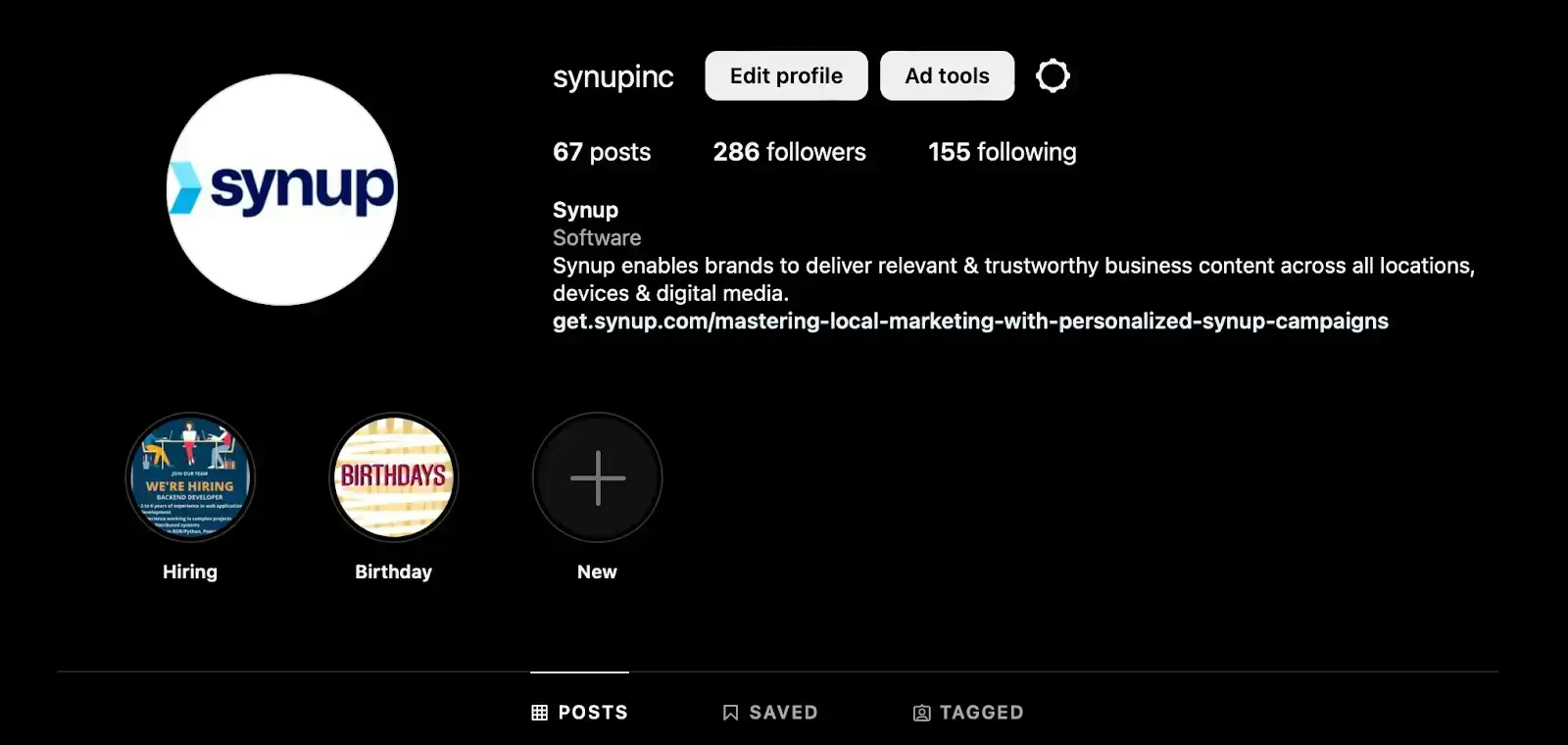
Platform overview: Owned by Meta (Facebook’s parent company), Instagram is a social media app for sharing photos and videos with nearly 1.5 billion users. It is known for its visual storytelling and influencer culture. More recently, it’s been a great platform for B2C brands to promote their businesses and engage with customers directly. Businesses can even sell directly from the Instagram platform, making conversions easier than ever.
Post frequency: If you have a B2C brand, it’s smart to post at least 2-3x per week to your feed. But don’t forget about Instagram stories! Stories are posts that disappear after 24 hours, and are great for sharing behind-the-scenes content, new campaigns, or even polling customers. It’s best practice to post stories everyday, but make sure you’re posting engaging content. If customers click through your stories, they’ll quickly be shoved to the back of the queue! And don’t forget about Instagram Reels and IGTV. IGTV is reserved for any long videos you might have, but Instagram Reels are perfect for growth. Posting Reels 5x per week will help your profile see untold amounts of growth; Instagram is currently pushing Reels content!
Best-performing content types: Reels are the best-performing content type on Instagram. Instagram is currently promoting Reels to compete with TikTok - so capitalize on that while it lasts!
Performance metrics to focus on: Focus on likes, comments, shares, engagement rate (10% is a good benchmark), and followers.
Makings of a great post: A great image post will show customers something about your business (a menu item, a try-on, a new product launch). Reels should be engaging and fun, with a casual and human feel about them. Stories shouldn’t feel too curated - try to replicate what individual users do vs. brands. No matter what, ensure that your images and videos are of high quality and that any embellishments reflect your brand’s visual identity! Including hashtags also helps push your content out to new audiences.
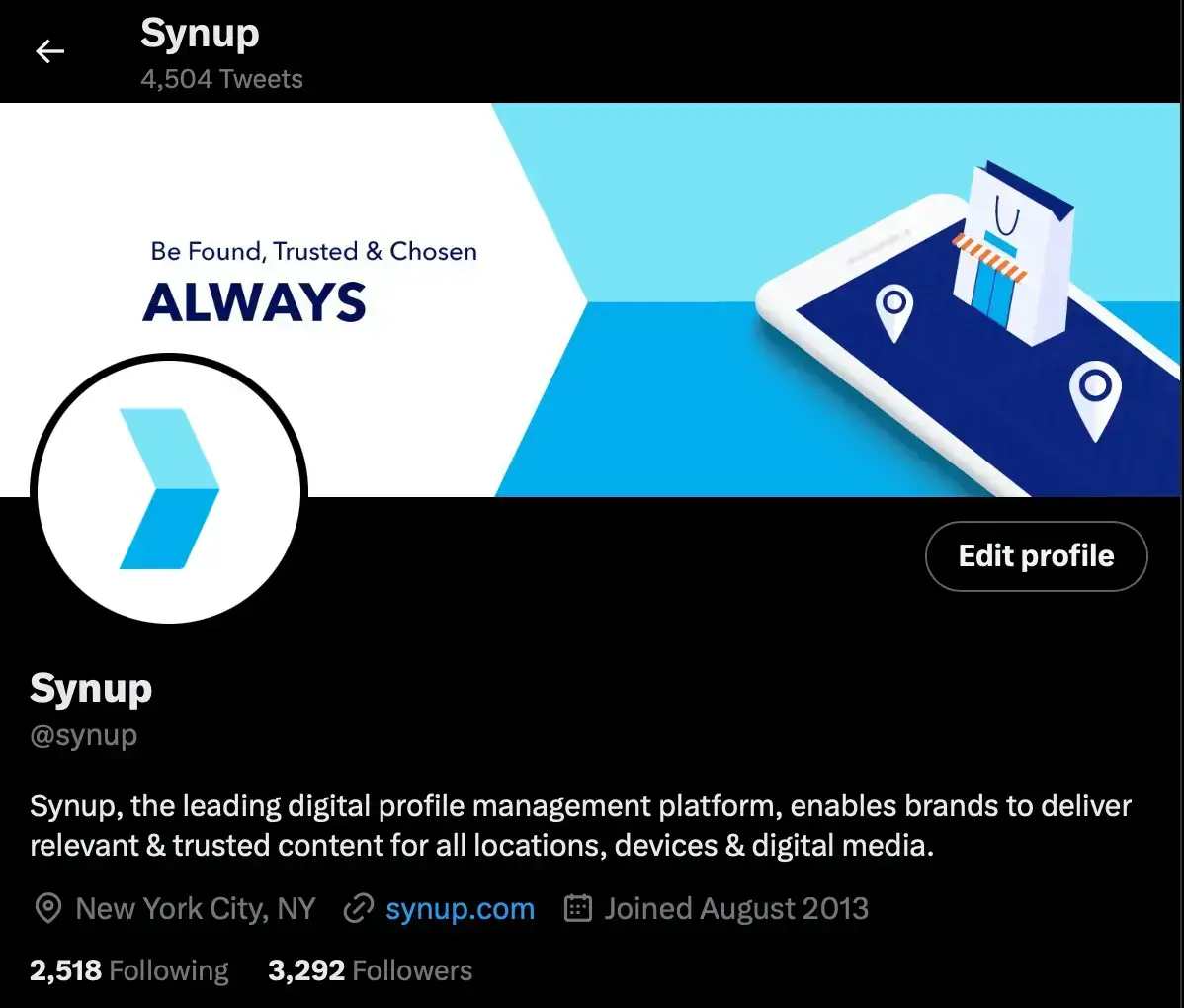
Platform overview: Twitter is a microblogging site that allows users to post short, 280-character messages called tweets. It is a popular platform for breaking news, political commentary, and real-time conversations. Famously bought by Elon Musk in 2022, it’s been going through a major upheaval of changes in the past year. Twitter has less than half a billion users. While not every business needs a Twitter, it’s a great platform for sharing of-the-moment commentary and quickly disseminating information.
Post frequency: A good rule of thumb is to post once a day and post a Twitter thread once per week. Make comments and retweet others’ posts as you encounter ones that are relevant to your business, but try to have interactions a few times a week. Interacting with others’ posts also signals to Twitter that you’re a dedicated user, which helps push your content forward in the algorithm.
Best-performing content types: Twitter famously hates links, so trying to direct traffic away from your tweet is difficult. Including images and videos helps get more interactions, but isn’t always necessary. Unless an image is relevant to your post, you can forego it! Asking questions and creating polls are great ways to create better-performing content.
Performance metrics to focus on: Focus on impressions, engagement rate, retweets, and followers.
Makings of a great post: Tweets should be short and to the point - that’s the entire point of the platform! Try to provide value and insight to your audience with every word. Commenting on recent happenings, whether in your business or in your industry, helps you stay relevant. Hashtags are a big part of Twitter, but you need to choose them wisely: only a few will fit on the end of a tweet.
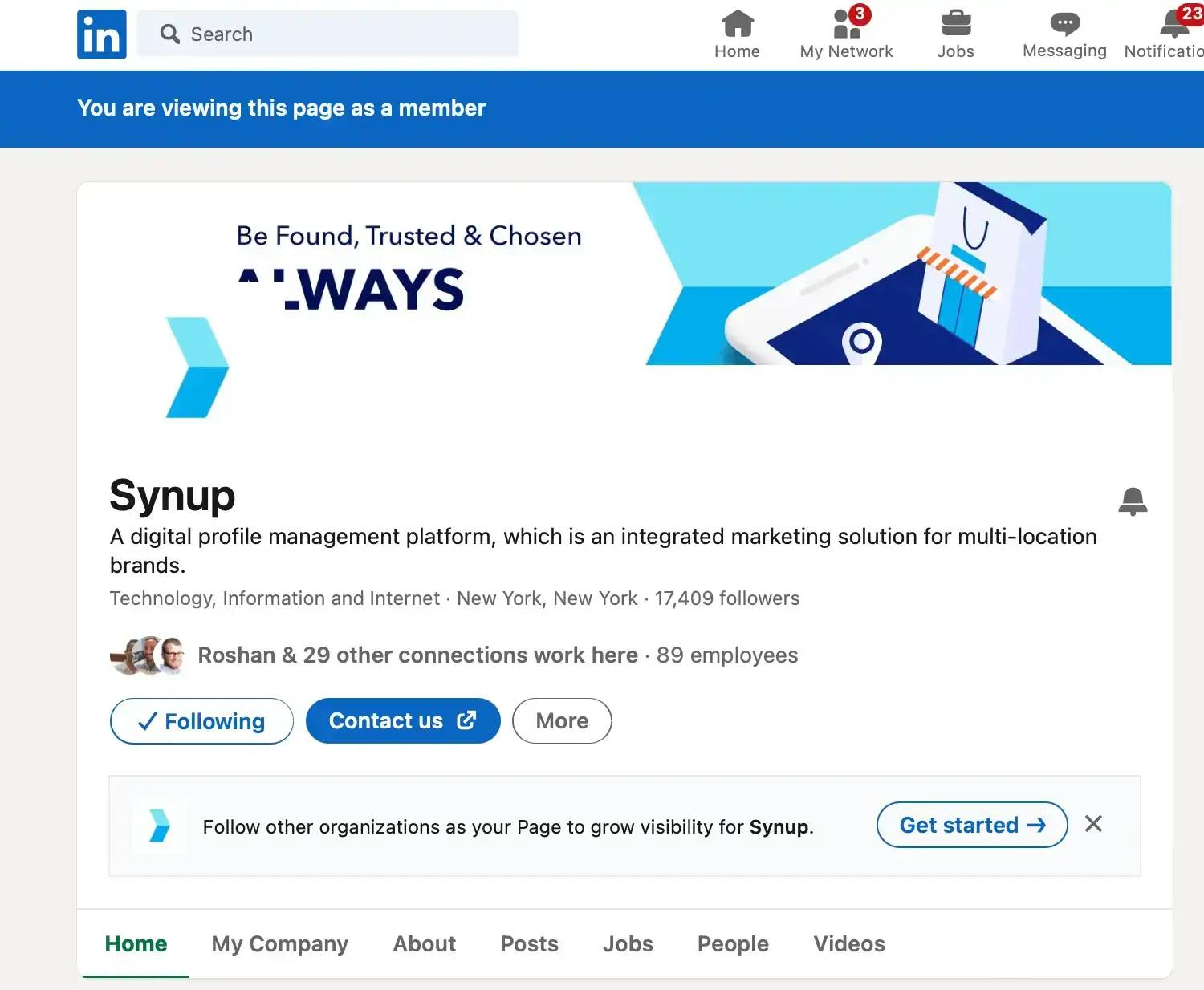
Platform overview: LinkedIn is a social networking site for professionals and businesses. It allows users to connect with colleagues, showcase their skills and experience, and search for job opportunities. LinkedIn has just under 1 billion active users, and how you utilize it depends on your goals. Many B2C companies just use LinkedIn for internal and admin work, while B2B companies tend to use it for promotion.
Post frequency: 1-2 posts per week is sufficient for LinkedIn postings. On LinkedIn, quality definitely matters more than quantity. Posts also tend to circulate for longer. While on other platforms, a post will become obsolete after a week, LinkedIn seems to carry the momentum forward!
Best-performing content types: LinkedIn is great for internal posts like company updates and job postings. But don’t neglect it for promoting your newest blog posts and articles, company updates, industry news, and thought leadership content! Videos, image carousels, and text posts all perform quite well.
Performance metrics to focus on: Focus on engagement rate, clicks, shares, impressions, and conversions.
Makings of a great post: On LinkedIn, a great post is shareable. Think: what does your audience want to share with their network? Even when your followers don’t share your content, just reacting to it will make it pop up in others’ feeds. Make sure every post is informative, actionable, or otherwise valuable.
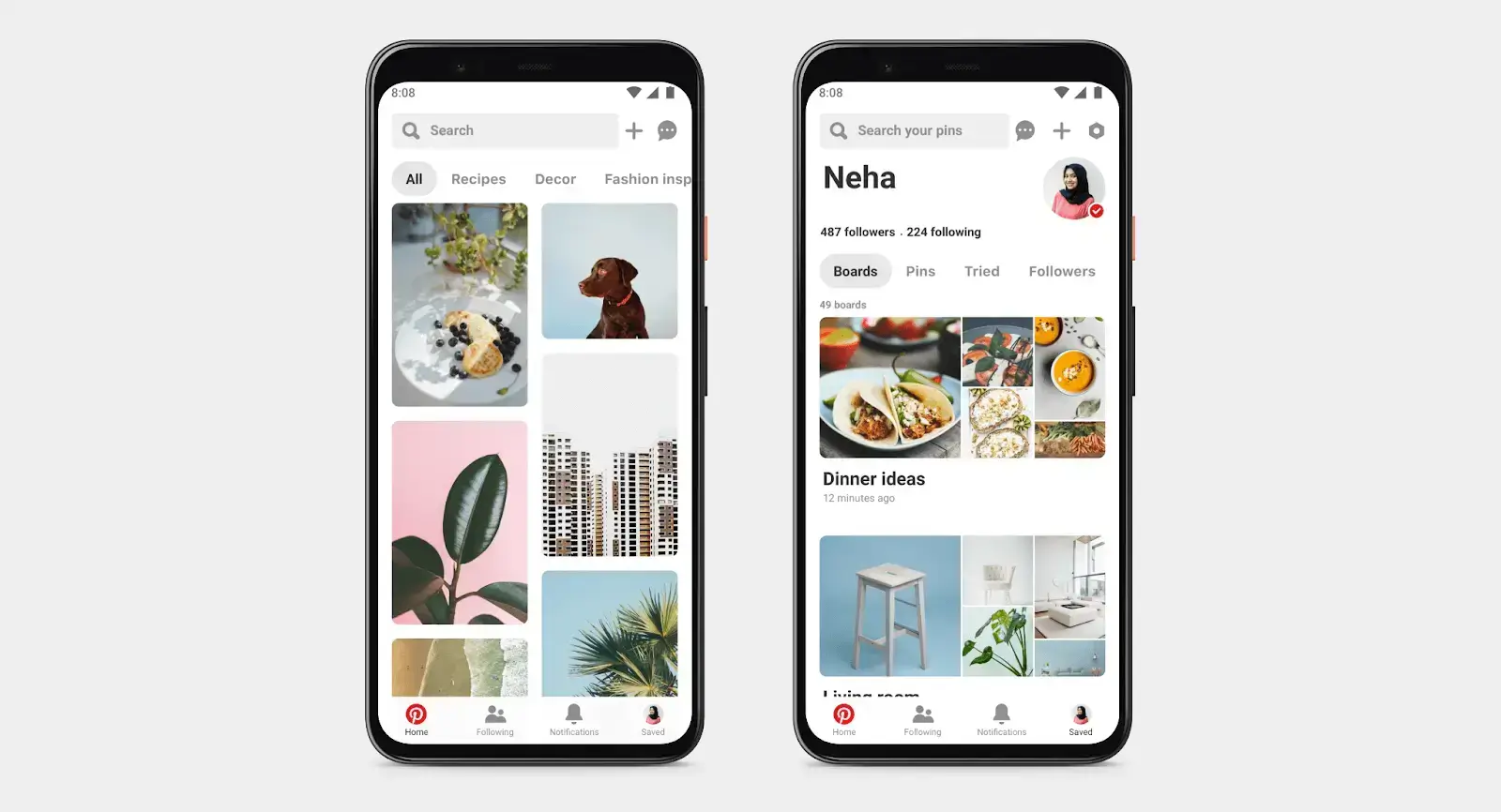
Platform overview: Pinterest is a visual search engine that allows users to discover and save ideas for their interests and projects. It is a platform for inspiration and creative exploration. With around half a billion users, it’s a great platform for individuals to save and curate information. It’s great for brands that have highly visual, aesthetically pleasing content.
Post frequency: Pinterest content is evergreen, so focus on producing high quality content rather than posting frequently.
Best-performing content types and the makings of a great post: The best Pinterest content is saveable. In other words, you want to create visual content that’s inspiring enough to come back to, informative enough to pin, or otherwise valuable to come back to. Whether it’s images, infographics, step-by-step tutorials, product demos, or other visually appealing content, the best-performing content on Pinterest provides value (aesthetic or otherwise).
Performance metrics to focus on: Focus on saves, clicks, impressions, and engagement rate.

TikTok
Platform overview: TikTok is a social media app that allows users to create and share short-form videos set to music or other audio. It is known for its viral challenges, dances, and memes. With almost a billion users, TikTok shot to popularity quickly. Despite recent legal challenges, TikTok is still a great platform for businesses and individuals alike to explore and show off their content.
Post frequency: Aim to post on TikTok once per day to see great growth!
Best-performing content types: TikTok centers around short-form video.
Performance metrics to focus on: Focus on views, likes, comments, shares, and followers.
Makings of a great post: Focus on a good hook, good lighting and sound, and a relevant, engaging topic. Try to incorporate trending audios or different post trends into your content. This shouldn’t be the majority of your content, but it helps draw new viewers to your page. Plus, don’t forget that you can repurpose TikToks as Instagram Reels (and vice-versa!)
Overall, each platform has its own unique features and audience, so it's important to tailor your content strategy to fit the platform and your goals. By creating engaging content that resonates with your audience, you can build a strong social media presence and grow your brand.
Hone your distinct brand voice to make a splash online
If you want to make an impact on your audience, you need to have a distinct voice. With such a saturated market, some brands are prioritizing memorability over utility. And it’s working! With millions of active users on various social media platforms, it's crucial to create a unique and memorable voice that resonates with your audience. To achieve this, you need to define your brand personality, create a consistent visual identity, and develop a brand voice that speaks directly to your followers.
Define your brand’s personality and voice
Your brand’s personality humanizes your brand. While you don’t need a mascot with a distinct persona to achieve this, it’s helpful to imagine your brand as a person of sorts. They should have a consistent personality and curate their voice and content like any influencer would. After all, your business is not just a business, and you’re not just selling a product. 64% of customers say that they feel loyal to brands they connect with. By giving customers a persona and voice to connect with, you can inspire customers to stay loyal to your brand for years to come! To define your brand’s personality, ask yourself these questions:
- What makes your brand unique?
- What values does your brand provide?
- How do you want your customers to perceive your brand?
Once you have defined your brand’s personality, you can create a social media strategy that aligns with it.
Recently, it’s become popular for brands to have more personality in their social media content. From Duolingo’s TikToks to hilarious tweets from Wendy’s, giving your brand a distinct voice makes your content stand out to customers.

Giving your social media presence some personality like this makes things more fun and engaging for your customers. Think about what would inspire you to retweet or share something. If you’re not creating content you want to consume, you shouldn’t assume that your audience will want to, either!
Creating a cohesive visual identity
Humans are visual creatures. That’s why your visual identity is so important - especially on social media. Your visual identity is the way your brand looks, including your logo, color scheme, fonts, and graphics. Creating a consistent visual identity is crucial to help your audience recognize your brand quickly. While customers may not always remember your name, images tell a story that customers can connect to. Consistency is key, so ensure that your brand visuals are consistent across all social media platforms!
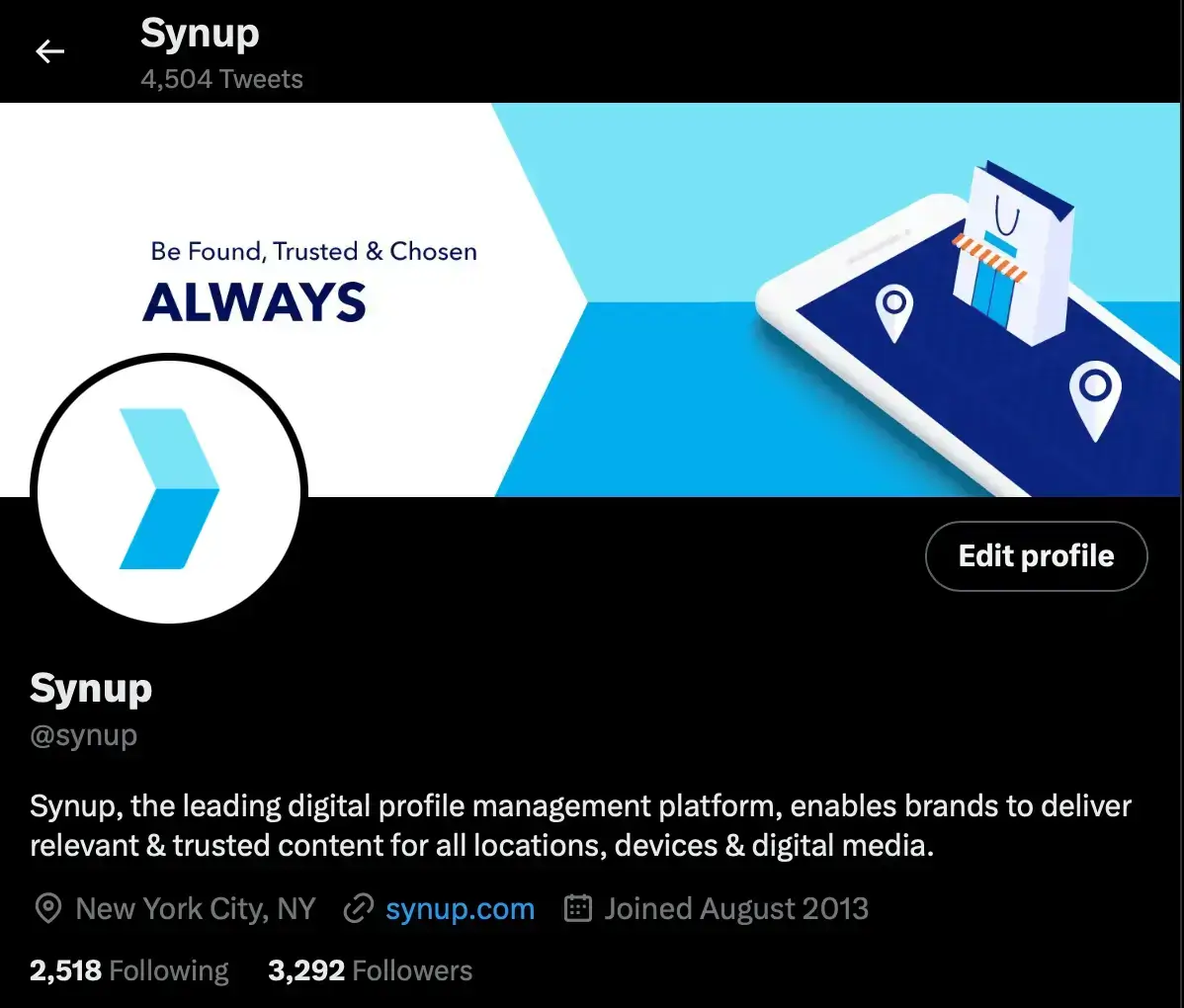
Using your brand voice to connect with your audience
Your brand voice is what ultimately captures your audience’s attention. It's the tone, language, and style that you use in your social media posts. To develop a brand voice that resonates with your audience, think about:
- Who is your target audience, and what kind of language do they use?
- What tone would best represent your brand personality? (casual, formal, quirky)
- How can you create a voice that is both authentic and engaging?
When you develop a brand voice that resonates with your audience, you can build a loyal following that trusts and connects with your brand.
Crafting a social media voice and identity requires a well-defined brand personality, consistent visual identity, and a brand voice that resonates with your audience. By taking the time to create a unique and engaging social media presence, you can strengthen your brand and grow your business!
Creating unique content for your brand
With so many brands vying for attention, it can be hard to stand out. Just simply copying what everyone else is doing isn’t going to cut it! If the first step is creating a distinctive brand voice, the next step is to leverage that brand voice to create unique content for your brand.
By unique, we don’t just mean your brand voice. Varying your content offerings and posting a variety of content types will keep consumers engaged while enabling you to experiment and find what works best for your brand in the long-term.
Because social media trends change so quickly, keeping your content varied also acts as an insurance policy against any sudden changes in consumer preferences! After all, social media moves quickly. Whether you have a lean team or are one of many social media managers for your business, pivoting your content is no easy task. Read on to learn how to create unique content that will increase your engagement!
Vary your content to keep audiences engaged
How do you choose which content forms your brand should produce? Quick answer: you don’t have to. Varying your content types is a great way to engage your audience, no matter their preferences. We all consume information in different ways, and offering your content across multiple mediums makes it accessible to a wider audience. Plus, different content types can get more or less visibility within specific platforms (think: Instagram promoting Reels). Content types to try include:
- Story content (Instagram, TikTok)
- Photos (all platforms)
- Text posts (Facebook, LinkedIn, Twitter)
- Image carousels (LinkedIn, Instagram)
- Short-form videos (Instagram, TikTok)
- Videos (Instagram, LinkedIn, Facebook)

Diversifying your content can help you reach new audiences, too. Creating engaging posts can be an experiment, but it’s not a guessing game. With a smart tool like Synup Social, you can create posts that your audience already has a verified interest in. Synup Social makes it easy to track how your posts are doing - so you can track your rise to success and coordinate future content strategies. From there, you can just rinse and repeat to create more of the content your audience already loves.
By creating posts that your audience will love, you can increase engagement and drive conversions. For many modern consumers, a brand’s social media account is often their first impression of any business. Ensure that you make a splash with great content and engaging, relevant posts to secure loyal customers for years to come!
Planning and scheduling content with a content calendar makes it easy to execute your social media strategy
Once you figure out your brand voice and decide what forms and styles of content to post, it’s time to plan it out! It’s 2023, so it’s time to ditch the Excel spreadsheet and use a more advanced planning platform. Enter: a social media management tool like Synup Social.
On Synup Social, you can see what you have scheduled for the coming month - and fill in any gaps to align with your posting schedule. View your upcoming posts in calendar or feed views, and set post goals for yourself directly within the platform. Here’s what the calendar looks like:

You can even create smart workflows to get your content approved by your team.
With the proper plan and tools in place, you’ll be able to easily schedule your content across platforms and mediums!
Share user-generated content for an extra dose of social proof
The best part of social media? Interacting with your customers! Keep tabs on mentions of your brand or account: sometimes, the best content can come from your audience. Especially if you have a highly visual product or service (think a cozy coffee shop, a restaurant, or a cute boutique), customers are likely to post images or text posts that mention your brand.
When you see your brand mentioned in a post or a story, make sure to reshare or repost it! Interacting with and sharing user-generated content:
- Provides social proof and authenticity to your profile
- Encourages future visitors that your business is legitimate and well-loved
- Helps customers feel connected to your brand when their posts are liked, commented on, or reposted
- Acts as an easy way to add more quality content to your profile
Pro tip: everyone likes to be noticed, and your customers are no different. Engaging with their content will help foster loyalty while creating more easy content for your brand!
Collaborate with influencers, brand ambassadors, or even other brands to help promote your business
No matter the size of your marketing budget, it’s worth considering collaborating with influencers, ambassadors, organizations, or even other brands. Posting to your social media accounts can sometimes feel like shouting into the void, but collaborating with other accounts helps boost your visibility while building community.
If you’re a local business, find local influencers or organizations to partner with for mutual promotion. Or, if you’re a larger brand, you can even find relevant influencers to promote your products or services for a fee!
Pro tip: if you’re a small business or operate with a tight budget, try finding small or local influencers who you can collaborate with. Developing a mutually beneficial partnership will benefit your business in the long run!
Engage with your audience to form connections and build loyal fans
The most important metric on social media: engagement! Whether it’s through likes, comments, or shares, engagement metrics tell the algorithm that your audience likes your posts. Plus, engagement lends you a unique opportunity to interact with your customers! From replying to their comments to creating interactive posts, customer interactions go a long way in fostering strong relationships.
Responding to comments and messages humanizes your brand
While it’s important to establish and use your unique brand voice in all of your posts, the place where your brand voice really shines is in your individual interactions. Here, customers can see the care you put into your customer interactions. This is where your brand ethos can really shine!
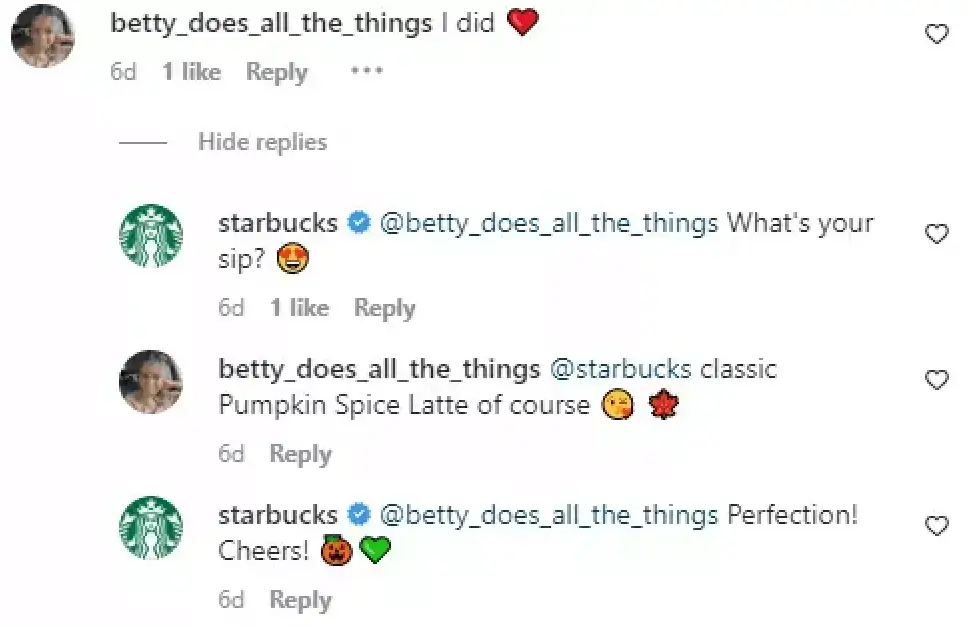
For example, Starbucks is upbeat, intelligent, and exuberant online. We’re sure the user in the above example was thrilled that Starbucks replied to her comment! Replying to follower messages or comments goes a long way in fostering connection.
Encourage interactions, discussions, and user-generated content
When you’re planning out your post schedule, make sure you’re including content that begs to be commented on. Whether it’s provoking questions, polls, or even contests where users submit images or repost content to their stories, content like this gives your engagement a major boost. Funnily enough, controversial content usually gets the biggest boost from engagement (on account of the rage comments…).
At the end of the day, content is judged on engagement because good content will prompt a second glance. In the fast-paced attention economy, making someone pause to read your content or write a comment is valuable. Algorithms recognize the importance of this - and so promote content based on its engagement metrics.
Measure your performance to continually adjust your strategy to better meet your goals
To determine the effectiveness of your social media marketing strategy, you need to measure and analyze your performance. This way, you can easily identify what's working and what's not, making adjustments accordingly. No social media strategy is perfect, and continually adapting your strategy based on performance ensures that you meet your goals and stay ahead of the competition.
Identify key performance indicators to measure your success
To measure the success of your social media marketing efforts, you need to identify the key performance indicators (KPIs) that most impact your overall business goals. These could include metrics like engagement rates, click-through rates, conversion rates, or social media reach. By determining which KPIs are most important to your business, you can focus your efforts on those areas and track your progress over time!
Utilize social media analytics tools to track your growth
To measure and analyze your social media performance, you need a solid social media management tool. These tools can provide valuable insights into your audience demographics, engagement rates, and more. A tool like Synup Social is perfect for advanced data analytics.
With Synup Social, you can see exactly which posts are driving engagement over time. Easily track and monitor your brand’s continual performance, giving you a clear picture of your ROI. Plus, the unique post-by-post analysis helps you understand which of your posts are resurfacing again and again. That way, you can make data-backed decisions as you continually refine your content strategy!


Track and analyze data to optimize your strategy
Once you've identified your KPIs and started using analytics tools, you must regularly track and analyze your data to optimize your social media marketing strategy. This means identifying trends, spotting areas for improvement, and making adjustments accordingly. By continually monitoring and refining your social media strategy, you can ensure that you're getting the most out of your efforts and achieving your business goals!
A well-oiled social media marketing strategy will benefit your business for years to come
Taking the time to plan and flesh out your business’ social media marketing strategy helps you see real ROI from your efforts. After all, social media isn’t something you can succeed at by just going through the motions. To see real results and make meaningful progress towards your overall business objectives, you need to devote time and energy to your social media presence.
We hope you’re well on your way to creating an effective and actionable social media management plan. While social media is constantly evolving, the need to manage it properly stays constant. If you want to take charge of your brand’s social media, Book a Demo and Experience Synup Social




